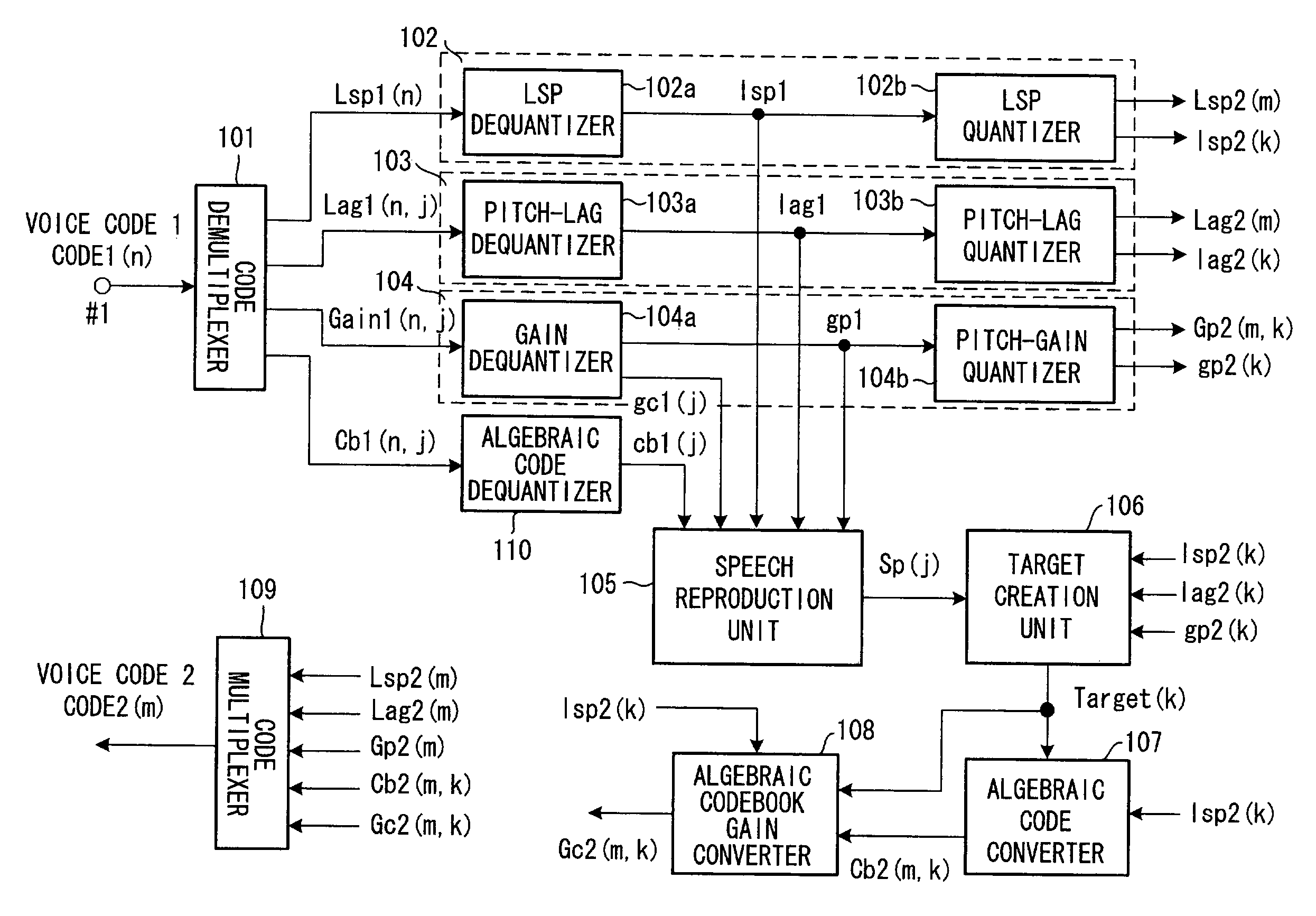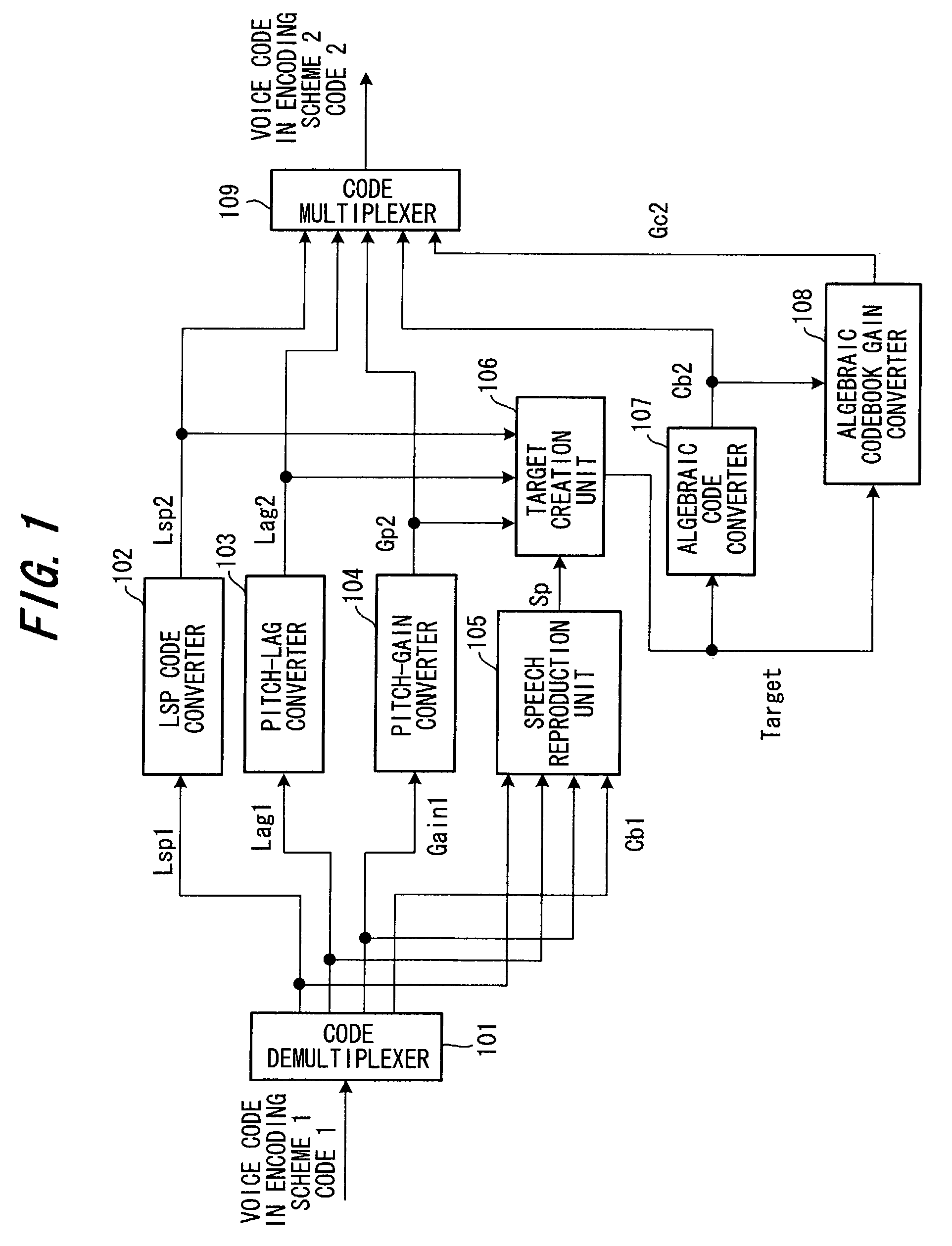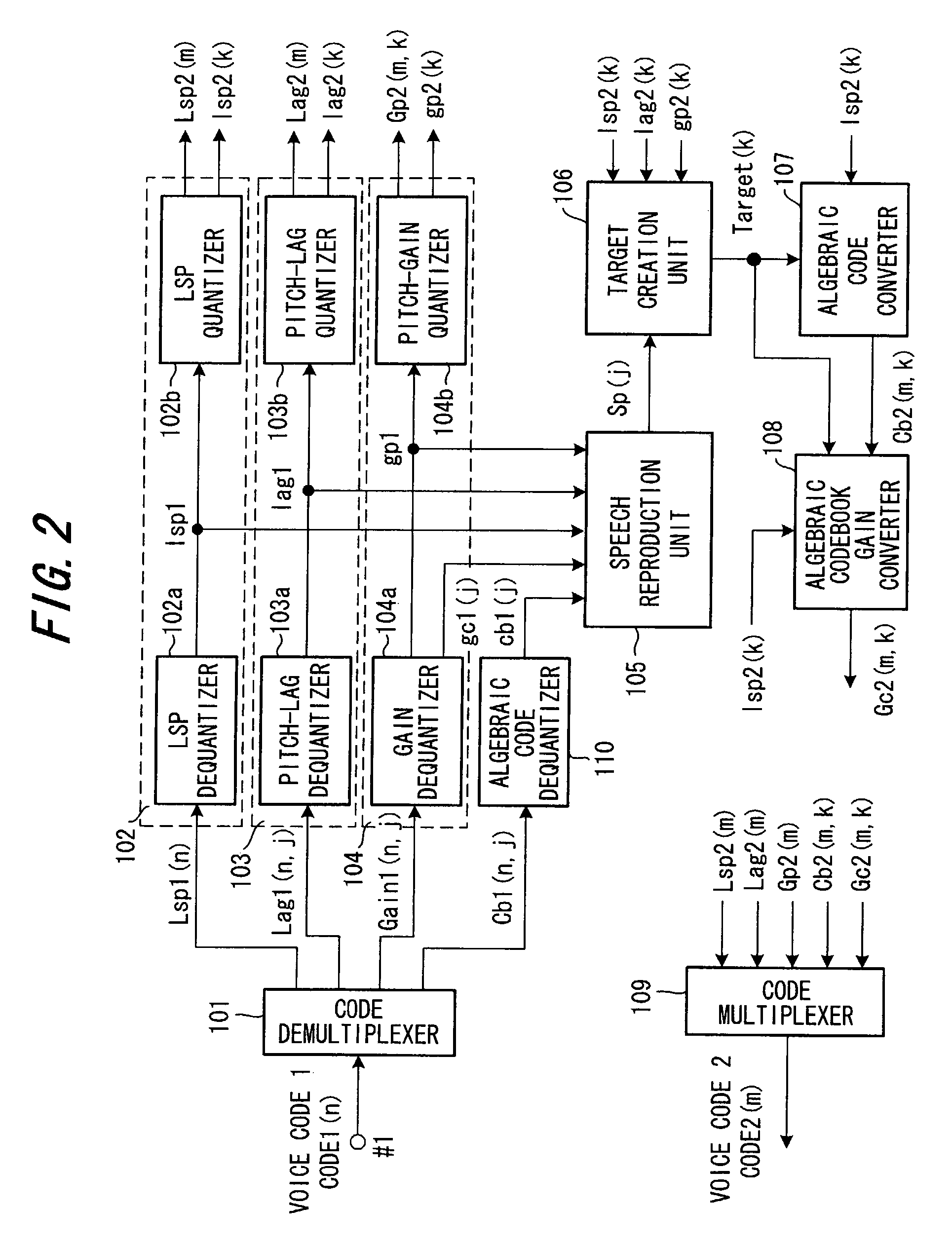Voice code conversion method and apparatus
a voice code and voice technology, applied in the field of voice code conversion methods and apparatuses, can solve the problems of increasing delay, unable to communicate between a cellular telephone network and the internet, and pronounced decline in the quality of reconstructed speech
- Summary
- Abstract
- Description
- Claims
- Application Information
AI Technical Summary
Benefits of technology
Problems solved by technology
Method used
Image
Examples
first embodiment
(B) First Embodiment
[0119]FIG. 2 is a block diagram of a voice code conversion apparatus according to a first embodiment of the present invention. Components in FIG. 2 identical with those shown in FIG. 1 are designated by like reference characters. This embodiment illustrates a case where G.729A is used as voice encoding scheme 1 and EVRC as voice encoding scheme 2. Further, though three modes, namely full-rate, half-rate and ⅛-rate modes are available in EVRC, here it will be assumed that only the full-rate mode is used.
[0120]Since frame length is 10 ms in G.729A and 20 ms in EVRC, two frames of voice code in G.729A is converted one frame of voice code in EVRC. A case will now be described in which voice code of an nth frame and (n+1)th frame of G.729A shown in (a) of FIG. 3 is converted to voice code of an mth frame in EVRC shown in (b) of FIG. 3.
[0121]In FIG. 2, an nth frame of voice code (channel data) CODE1(n) is input from a G.729A-compliant encoder (not shown) to a terminal ...
second embodiment
(C) Second Embodiment
[0140]FIG. 9 is a block diagram of a voice code conversion apparatus according to a second embodiment of the present invention. Components in FIG. 9 identical with those of the first embodiment shown in FIG. 2 are designated by like reference characters. The second embodiment differs from the first embodiment in that ① the algebraic codebook gain converter 108 of the first embodiment is deleted and substituted by an algebraic codebook gain quantizer 111, and ② the algebraic codebook gain code also is converted in the quantization parameter region in addition to the LSP code, pitch-lag code and pitch-gain code.
[0141]In the second embodiment, only the method of converting the algebraic codebook gain code differs from that of the first embodiment. The method of converting the algebraic codebook gain code according to the second embodiment will now be described.
[0142]In G.729A, algebraic codebook gain is quantized ever 5-ms subframe. If 20 ms is considered as the un...
third embodiment
(D) Third Embodiment
[0145]FIG. 11 is a block diagram of a voice code conversion apparatus according to a third embodiment of the present invention. The third embodiment illustrates an example of a case where EVRC voice code is converted to G.729A voice code. In FIG. 11, voice code is input to a rate discrimination unit 201 from an EVRC encoder, whereupon the rate discrimination unit 201 discriminates the EVRC rate. Since rate information indicative of the full rate, half rate or ⅛ rate is contained in the EVRC voice code, the rate discrimination unit 201 uses this information to discriminate the EVRC rate. The rate discrimination unit 201 changes over switches S1, S2 in accordance with the rate, inputs the EVRC voice code selectively to prescribed voice code converters 202, 203, 204 for full-, half- and eight-rates, respectively, and sends G.729A voice code, which is output from these voice code converters, to the side of a G.729A decoder.
[0146]Voice Code Converter for Full Rate
[014...
PUM
 Login to View More
Login to View More Abstract
Description
Claims
Application Information
 Login to View More
Login to View More - R&D
- Intellectual Property
- Life Sciences
- Materials
- Tech Scout
- Unparalleled Data Quality
- Higher Quality Content
- 60% Fewer Hallucinations
Browse by: Latest US Patents, China's latest patents, Technical Efficacy Thesaurus, Application Domain, Technology Topic, Popular Technical Reports.
© 2025 PatSnap. All rights reserved.Legal|Privacy policy|Modern Slavery Act Transparency Statement|Sitemap|About US| Contact US: help@patsnap.com



